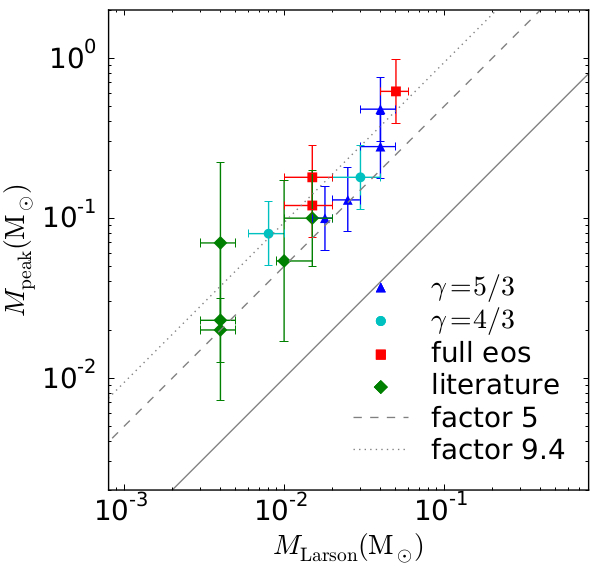
|
EPoS |
|
EPoS Contribution
|
|
A Robust Explanation of the Peak of the IMF
Yueh-Ning Lee IPGP, Paris, FR | |
| The initial mass function (IMF) is suggested by observations to be universal in spite of the wide variety of star-forming environments. In this presentation, I will focus on the peak of the IMF that occurs at about 0.2 solar masses. We performed a series of simulations in which the stellar mass spectrum varies with initial global density, while a lower mass limit that truncates the mass spectrum is is seen with relatively high initial densities, giving a peak of the distribution that is independent of the large-scale conditions. We propose a mechanism to explain the peak of the IMF using a combination of the tidal forces and the thermodynamics of the first Larson core. A characteristic mass of 10 times the mass of the first Larson core, that is, around 0.2 solar masses, is robustly predicted in high density environments. These results suggest that, the universality of the IMF is probably true only under certain circumstances, or possibly it is the initial conditions and local physics that are universal and some particular conditions are not so common! | |
 | |
| Caption: Correlation between the peak of the sink particle mass spectrum (from simulations) and the mass of the first Larson core inferred from hydrostatic equilibrium. A series of numerical experiments with varied equations of state suggested that the stars are most likely to form at a mass around ten times that of the first Larson core. | |
| Collaborators: P. Hennebelle, CEA, FR |
Key publication
Suggested Session: Star formation "laws" and IMF |